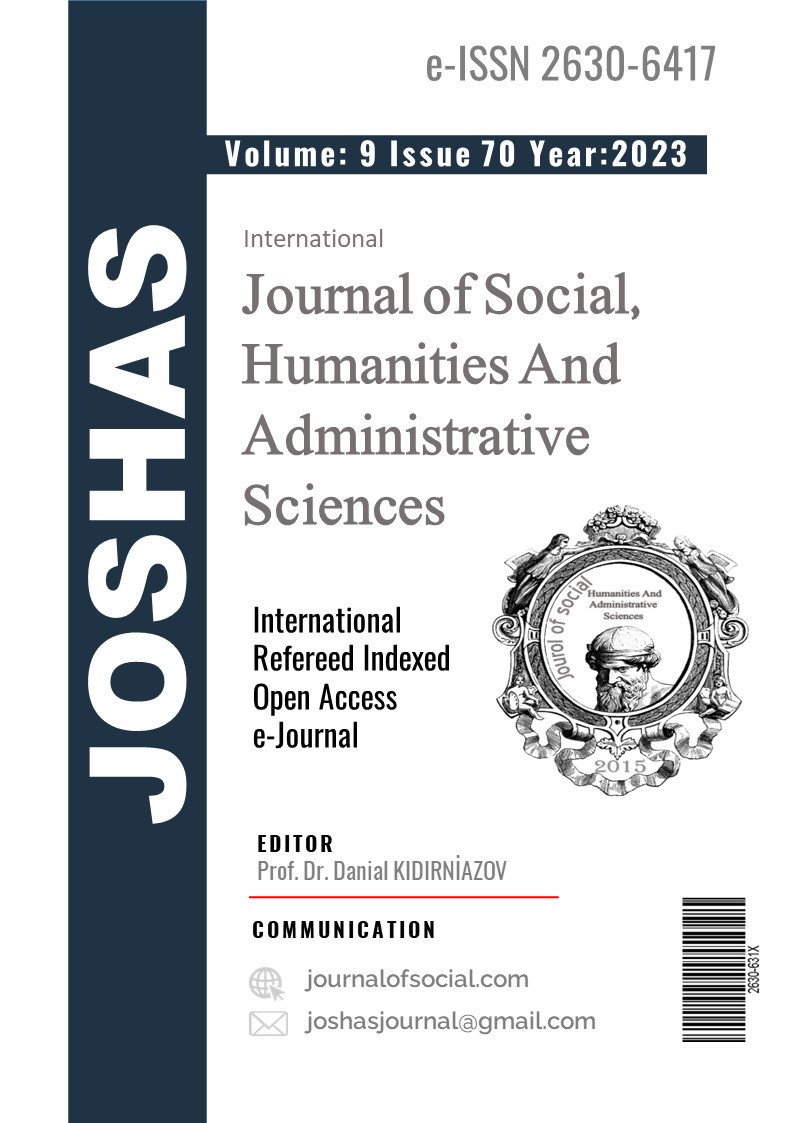Author :
Abstract
Ülkemizin gelişiminde önemli bir görev üstlenmiş olan tarım sektörü sahip olduğu yapısal özellikleri nedeniyle karmaşık bir yapıya sahiptir. Bu karmaşık yapının kendisinden beklenen başarıyı gösterebilmesi sektörün yapısına uygun doğru ve etkin bir örgütlenme ile sağlanabilecektir. Tarım sektöründe bugün en etkin örgütlenme şekli kooperatif şeklinde örgütlenmedir. Ülkemizde tarım kooperatiflerinin her geçen gün artan sayısı birtakım problemlerin yaşanmasına neden olmakta ve niceliğin mi niteliğin mi önemli olduğu sorusunu sormamamıza neden olmaktadır. Sayısal çokluğun her daim başarıyı getirmediğinden hareketle tarımsal kooperatiflerin başarılı olmaları için gerekli olan kriterlere yoğunlaşılması gerekmektedir. Tarımsal kooperatiflerin gerek ekonomik gerekse sosyal alanda başarılı olabilmeleri için eğitim, doğru ve etkin bir mevzuat, toplumsal sorumluluk bağlamında sosyal faaliyetlere katılım, küçük ve parçalı tarım arazileri için standart bir arazi büyüklüğünün belirlenmesi ve finansman ihtiyacının karşılanabilmesi gibi unsurların bir arada bulunması gerekmektedir. Ülkemizdeki tarımsal arazi yapısının oldukça dağınık ve küçük parçalı olması tarımsal kooperatiflerin başarılı olmasını engelleyen nedenlerden biri olarak karşımıza çıkmaktadır. Arazi büyüklüğü üzerinde yaş, gelir düzeyi, eğitim seviyesi gibi birçok demografik faktör etkili olabilmektedir. Çalışmada bu faktörlerden biri olan eğitim seviyesi ile arazi büyüklüğü arasında bir ilişki olup olmadığı tespit edilmeye çalışılmıştır.
Bugün ülkemizde tarım kooperatiflerinin sayısı 12.501 adet ve üye sayısı ise 3308.940’tır. Bunlardan 31’i Pancar Ekicileri Kooperatifi, 2519’u Sılama Kooperatifi’dir. Bu araştırmada amacımız Konya il sınırları içinde yer alan 11 Pancar Ekicileri Kooperatifi ve 291 Sulama Kooperatifi’ne üye çiftçilerin eğitim seviyesi ile tarımsal arazi büyüklüğü arasında bir ilişki olup olmadığını tespit etmeye çalışmaktır (Tarım ve Orman Bakanlığı,2023). Araştırmaya 11 Pancar Ekicileri Kooperatifi’ne kayıtlı 670 kooperatif üyesi, 291 Sulama Kooperatifine kayıtlı 614 kooperatif üyesi çiftçi katılmıştır. Elde edilen veriler SPSS 25.0 paket programı ile analiz edilmiştir.
Keywords
Abstract
It has a complex structure due to the resilience features of the agricultural sector, which plays an important role in the region. The success expected from this complex structure can only be achieved through an effective organization appropriate to the production structure. The most effective form of organization in agriculture today is cooperative organization. It causes agricultural agricultural cooperatives to experience an increasing number of problems every day and causes us to store that beauty is important. Considering that numerical abundance always brings success, it is necessary to focus on the part that is necessary for the agreement cooperation to be successful. In order for the economic development of agricultural agriculture to be successful in the social field, elements such as education, correct and effective legislation, social responsibility change, participation in social activities, determination of a standard land size for small and fragmented agricultural lands and meeting the financing development must occur together. Fragmented land The land structure is very dispersed and small-sized and does not exist as one of the successful hiding of cooperation. Many demographic factors such as age, income level and education level can be effective on land size. The study continues to determine whether there is a relationship between education level and land size, which is one of these factors.
Today, the number of agricultural cooperatives in our country is 12,501 and the number of members is 3308,940. 31 of these are Beet Growers Cooperative and 2519 are Sılama Cooperative. Our aim in this research is to try to determine whether there is a relationship between the education level of farmers who are members of 11 Sugar Beet Growers Cooperatives and 291 Irrigation Cooperatives within the borders of Konya province and the size of agricultural land (Ministry of Agriculture and Forestry, 2021). 670 cooperative members registered in 11 Beet Growers Cooperatives and 614 cooperative member farmers registered in 291 Irrigation Cooperatives participated in the research. The data obtained was analyzed with the SPSS 25.0 package program.





